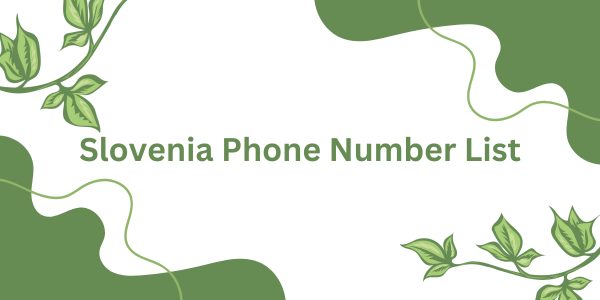Post by fahimaislam on Nov 16, 2024 7:19:15 GMT
Slovenia shares its borders with four countries: Austria to the north, Italy to the west, Croatia to the south and southeast, and Hungary to the northeast. The country’s location in Central Europe places it at a crossroads of different cultural, historical, and geographic influences, which is reflected in its diverse heritage.
Austria: To the north, Slovenia shares a border with Austria, spanning Slovenia Phone Number List about 330 kilometers. This border is marked by the Alps, and the region is known for its picturesque mountain landscapes and proximity to the Karavanke Mountains. The border with Austria is significant for trade, tourism, and environmental conservation.
Italy: The border with Italy to the west stretches for about 200 kilometers. It is characterized by wine-growing regions, Mediterranean influence, and a rich cultural exchange between the two countries. The border region includes the Gorizia and Gradisca areas and extends to Slovenia's Adriatic coast at the port town of Koper, which facilitates maritime trade.

Croatia: To the south and southeast, Slovenia shares a 670-kilometer border with Croatia. This border follows various natural features, including the Mura River and the Dragonja River, and passes through plains and hills. It is one of Slovenia's longest borders and has been historically significant for both countries. Croatia's coastline along the Adriatic Sea is also in close proximity, with Slovenia having a small access to the sea through the Gulf of Trieste.
Hungary: To the northeast, Slovenia shares a shorter border of about 102 kilometers with Hungary. This border lies within the Pannonian Plain, an area of flat terrain. The region is important for agriculture and trade and has a history of close connections between the two nations, particularly in terms of cultural exchanges.
These four neighboring countries contribute to Slovenia’s vibrant cultural diversity and strategic position in Europe.



